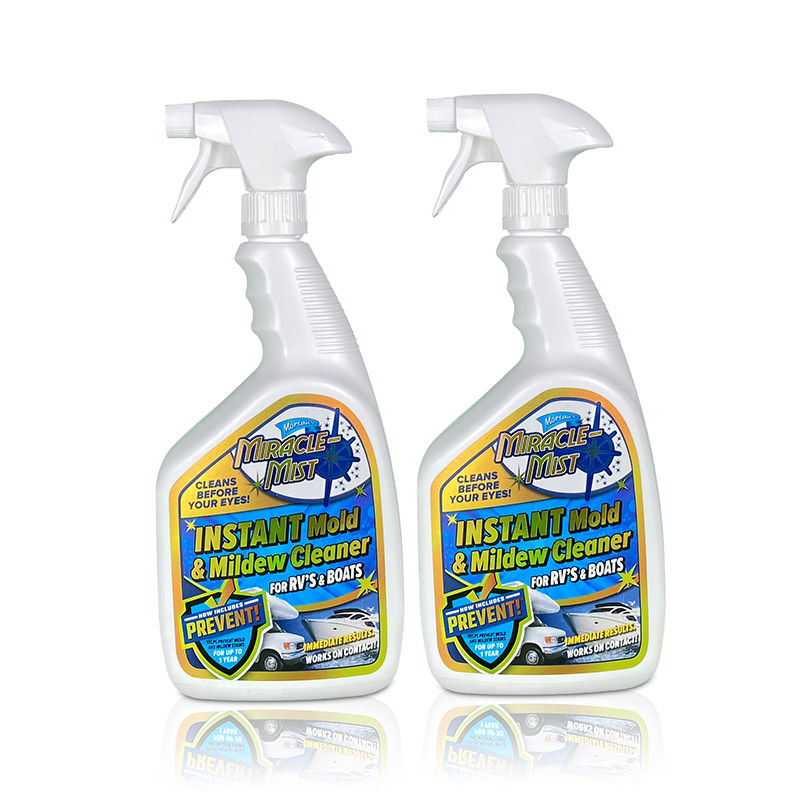Preventative Measures to Keep Mold and Mildew at Bay
Are you tired of battling mold and mildew in your home, only for them to keep coming back like unwanted guests? Well, fret no more!
In this guide, we will share with you some simple preventative measures to keep mold and mildew at bay. Just like a sturdy shield protects a knight from harm, these measures will help safeguard your home from the invasion of these pesky fungi.
By identifying and addressing moisture sources, improving ventilation, controlling indoor humidity levels, regularly cleaning and drying damp areas, and using mold-resistant materials and products, you can create an inhospitable environment for mold and mildew to thrive.
So, let’s dive in and take control of your home’s mold and mildew situation once and for all!
Key Takeaways
– Regularly inspect your home for leaks or areas of excess moisture.
– Improve ventilation in your home by opening windows and doors, installing exhaust fans, and cleaning air filters.
– Control indoor humidity levels between 30% and 50% using a hygrometer, dehumidifiers, air conditioners, and fans.
– Regularly clean and dry damp areas, using water and detergent, and ensure proper ventilation to prevent mold and mildew growth.
Identify and Address Moisture Sources
To address moisture sources and prevent mold and mildew growth, you need to:
– Identify and fix any leaks or areas of excess moisture in your home. Leaks can come from various sources, such as plumbing fixtures, pipes, or even the roof. It’s crucial to inspect these areas regularly to catch any leaks early on. Look for signs of water damage, like water stains or discoloration on walls, ceilings, or floors. Don’t forget to check under sinks and around toilets as well. If you notice any dampness or moisture, it’s a clear indication of a potential leak.
– Once you’ve identified the source of the leak, it’s essential to fix it promptly. This could involve tightening a loose pipe, replacing a worn-out washer, or sealing gaps in the roof. Remember, even small leaks can lead to significant water damage and mold growth if left unaddressed.
– In addition to leaks, you should also be cautious of areas with excess moisture. Bathrooms and kitchens are particularly prone to moisture buildup due to the nature of their activities. Make sure to use exhaust fans or open windows to improve ventilation and reduce humidity levels. Wipe down surfaces regularly to prevent moisture from accumulating.
Improve Ventilation in Your Home
To improve ventilation in your home and prevent mold and mildew growth, make sure to properly circulate air throughout the living spaces. Here are some steps you can take:
1. Open windows and doors: Fresh air is essential for maintaining good indoor air quality. Open windows and doors whenever possible to allow for natural airflow and exchange of stale air.
2. Use exhaust fans: Install exhaust fans in high-humidity areas such as bathrooms and kitchens. These fans can help remove excess moisture and odors from the air, reducing the risk of mold and mildew growth.
3. Clean air filters regularly: Dirty air filters can restrict airflow and decrease the effectiveness of your ventilation system. Clean or replace air filters regularly to ensure proper air circulation throughout your home.
4. Consider a whole-house ventilation system: If your home lacks sufficient natural ventilation, consider installing a whole-house ventilation system. These systems can help ensure a constant supply of fresh air and expel stale air, reducing the risk of mold and mildew growth.
Improving ventilation in your home is crucial for preventing mold and mildew growth. By following these steps, you can create a healthier and more comfortable living environment for you and your family.
Control Indoor Humidity Levels
You can control indoor humidity levels by monitoring and adjusting the moisture levels in your home. High humidity can create a breeding ground for mold and mildew, leading to potential health issues and damage to your property.
To keep humidity in check, start by investing in a hygrometer, a device that measures moisture levels. Place it in different areas of your home to get an accurate reading. Ideally, you want to maintain indoor humidity levels between 30% and 50%.
If the humidity is too high, use dehumidifiers to remove excess moisture from the air. These devices work by extracting water vapor and collecting it in a reservoir. Additionally, consider using air conditioners and fans to circulate air and reduce humidity.
Proper ventilation is also crucial in controlling indoor humidity levels. Make sure that your bathrooms and kitchen are equipped with exhaust fans to remove excess moisture. Lastly, be mindful of activities that can increase humidity, such as cooking or showering, and take steps to minimize moisture buildup.
Regularly Clean and Dry Damp Areas
Regularly clean and dry any damp areas in your home to prevent the growth of mold and mildew. Mold and mildew thrive in damp environments, so it’s crucial to keep these areas clean and dry to avoid their presence. Here are four steps to effectively clean and dry damp areas in your home:
1. Identify the damp areas: Look out for areas that are prone to moisture, such as bathrooms, kitchens, basements, and laundry rooms. These areas often have higher humidity levels and are more susceptible to mold and mildew growth.
2. Clean the surfaces: Use a mixture of water and detergent to clean the affected surfaces. Scrub away any visible mold or mildew and make sure to reach all the nooks and crannies. For stubborn stains, you can use a mixture of bleach and water, but be cautious and follow safety guidelines.
3. Dry thoroughly: After cleaning, ensure that the area is completely dry. Use fans, dehumidifiers, or open windows to increase air circulation and expedite the drying process. It’s important to remove any excess moisture to prevent further mold and mildew growth.
4. Prevent future dampness: Take preventive measures to minimize dampness in these areas. Fix any leaks or plumbing issues promptly, use exhaust fans during and after activities that generate moisture, and keep the area well-ventilated.
Use Mold-Resistant Materials and Products
Invest in mold-resistant materials and products to effectively prevent the growth of mold and mildew in your home.
When it comes to building or renovating your home, choosing the right materials can make a significant difference in preventing mold and mildew growth. Look for materials that are specifically designed to resist mold, such as mold-resistant drywall, paint, and insulation.
Mold-resistant drywall, also known as moisture-resistant drywall, has a special coating that helps to prevent mold growth. It’s especially useful in areas with high humidity, such as bathrooms and basements. When using mold-resistant drywall, make sure to also use mold-resistant joint compound and tape to ensure maximum protection.
In addition to mold-resistant drywall, using mold-resistant paint can further enhance the prevention of mold and mildew. Mold-resistant paint contains antimicrobial additives that inhibit the growth of mold and mildew on the painted surface. It’s a great choice for bathrooms, kitchens, and other areas prone to moisture.
When insulating your home, consider using mold-resistant insulation. This type of insulation is made from materials that are resistant to moisture and mold growth, such as closed-cell spray foam or fiberglass with a mold-resistant facing. Proper insulation can help prevent condensation and moisture buildup, reducing the risk of mold and mildew growth.
Frequently Asked Questions
How Can I Test for Mold in My Home?
To test for mold in your home, start by visually inspecting areas prone to moisture, like bathrooms and basements. Look for visible signs of mold, such as discoloration or a musty odor.
You can also use a mold testing kit, available at hardware stores, which includes a swab or tape to collect samples.
If you suspect a more extensive mold problem, consider hiring a professional mold inspector.
Are There Any Natural Remedies to Prevent Mold and Mildew?
There are indeed natural remedies that can help prevent mold and mildew.
One effective method is to keep your home well-ventilated by opening windows and using fans.
Another option is to control humidity levels by using a dehumidifier or running your air conditioner.
Additionally, regularly cleaning and drying areas prone to moisture, such as bathrooms and kitchens, can help keep mold and mildew at bay.
Remember to address any leaks or water damage promptly as well.
Can Mold and Mildew Cause Health Issues?
Yes, mold and mildew can cause health issues.
Breathing in mold spores can trigger allergic reactions, such as sneezing, coughing, and itchy eyes. In some cases, mold exposure can also lead to respiratory problems or worsen existing conditions like asthma.
It’s important to address any mold or mildew issues in your home to protect your health.
Regular cleaning and proper ventilation can help reduce the risk of mold and mildew growth.
What Should I Do if I Find Mold in My Home?
If you find mold in your home, it’s important to take immediate action.
First, identify and fix the source of moisture to prevent further growth.
Then, carefully clean the affected area using a solution of bleach and water.
Wear protective gear, such as gloves and a mask, to avoid inhaling spores.
If the mold covers a large area or returns after cleaning, it’s best to consult a professional for thorough remediation.
Don’t ignore mold as it can cause health issues and damage to your home.
Are There Any Long-Term Solutions to Prevent Mold and Mildew Growth?
There are definitely long-term solutions to prevent mold and mildew growth in your home.
It’s important to keep your indoor humidity levels low, ideally below 50%.
Make sure to fix any leaks or water damage promptly, as moisture is a breeding ground for mold.
Regularly clean and dry areas prone to moisture, such as bathrooms and kitchens.
Use ventilation fans or open windows to improve air circulation.
Additionally, consider using mold-resistant materials in areas prone to moisture, like bathrooms and basements.
Conclusion
So, by taking these preventative measures, you can effectively keep mold and mildew at bay in your home.
Identifying and addressing moisture sources, improving ventilation, controlling indoor humidity levels, regularly cleaning and drying damp areas, and using mold-resistant materials and products are all essential steps t browse this site o maintain a mold-free environment.
With these simple actions, you can ensure a healthier and cleaner living space for you and your family.

Welcome to my website! My name is Jeremy Henschke, and I am a dedicated professional Residential Pressure Washing Technician. With years of experience in the industry, I have honed my skills and expertise to provide top-notch services in Residential Pressure Washing, Commercial Power Cleaning, Eco-Friendly Washing Solutions, and Graffiti Eradication Services. Read more

